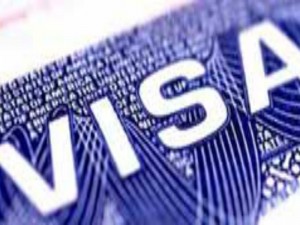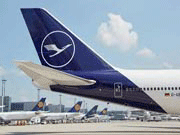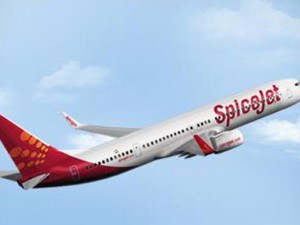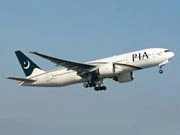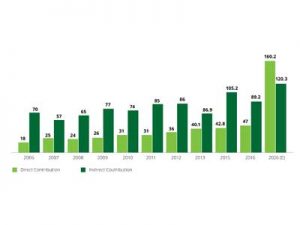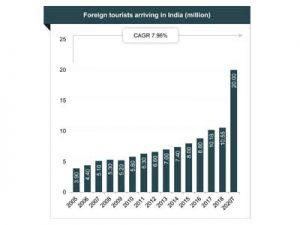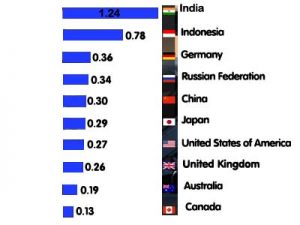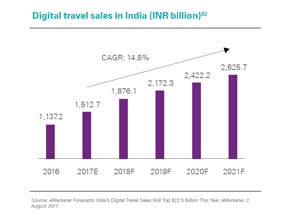Starting from May 20, international passengers arriving at UK air and sea ports no longer need to fill out Home Office landing cards. Since 1971, landing cards have been required of all passengers arriving by air or sea from outside the European Economic Area. The card records the purpose of the traveler’s visit and the duration of their stay. It also records whether or not a traveler has brought items into the UK that warrant inspection by custom’s authorities. The decision to scrap landing cards comes after the government announced it was extending the use of e-gates at UK borders to citizens of the US, Australia, New Zealand, Canada, Japan, Singapore and South Korea. Earlier, the gates, which scan e-passports, were reserved for European Economic Area citizens.
Read More »Amazon launches domestic flight booking service in India, partners with Cleartrip
Indian travellers can now use Amazon to book their domestic flights besides shopping, money transfers, utility bill payments, mobile recharges. Amazon has partnered with Cleartrip to launch the service. Amazon is giving cashback of Rs 800 to its prime users for the booking made upto Rs 8000, Rs 1200 for the booking of Rs 8000-19,999 and Rs 2000 cashback for the booking of more than Rs 20,000.
Read More »Lufthansa hikes DCC from £11.30 to £14 from 1 June
Lufthansa Group is to increase its Distribution Cost Charge (DCC) to £14 due to the weakening value of the pound. The latest hike takes effect from 1 June, with all tickets issued before this date subject to the current DCC of £11.30. The DCC does not apply for sales partners connected to Lufthansa Group airlines’ Direct PI or the free of charge, web-based SPRK booking platform. In the UK, the airline group claims that a “strongly increasing number of travel agents are in a position to take advantage of this saving, leading to a consistent price advantage of up to £60 on a round trip over the traditional GDS. The charge increase follows IAG’s decision to move to a £9 per leg fee in September last year, up from the previous fee of £8. Source: BBT
Read More »Daily non-stop between Jeddah and Mumbai on SpiceJet from 5 July, bookings open
SpiceJet has introduced a daily non-stop flight on Mumbai-Jeddah-Mumbai sector from July 5. Mumbai is the third destination after Hyderabad and Kozhikode which is being connected by SpiceJet with the pilgrim city of Jeddah. SpiceJet’s flight SG 68 will depart from Mumbai at 7.30 pm (all local times) and arrive in Jeddah at 10.15 pm on the same day. The return flight SG 69 will depart at 11.30 pm and reach Mumbai at 6.20 am on the following day. Celebrating the launch, SpiceJet has announced a special fare of INR 12,399 (all-inclusive) for Mumbai – Jeddah and INR 15,399 (all inclusive) for Jeddah – Mumbai. Reiterating the airline’s commitment on augmenting direct connectivity between metros and key non-metro cities, SpiceJet has enhanced its operations on the Mumbai-Dehradun-Mumbai (2nd frequency) and Mumbai-Guwahati-Mumbai (2nd frequency) sectors. SpiceJet has also announced a new flight connecting Guwahati to Bagdogra. SpiceJet will deploy its Boeing 737 NG aircraft on both the international as well as domestic routes. Shilpa Bhatia Chief Sales and Revenue Officer SpiceJet, said, “Mumbai has always been one of our key destinations and with the launch of these new flights we intend to further ramp up our presence from the city. We are delighted to announce our new flight connecting Mumbai with Jeddah which will offer more convenience and flexibility to passengers travelling between the two cities for pilgrimage, business or leisure.” “The new domestic flights will help in minimizing the passenger inconvenience caused due to the sudden shortage in capacity within the Indian aviation industry.” She added.
Read More »Qatar Airways is looking for Indian partners to meet additional capacity demand
Post a withdrawal of 28 weekly flights between Doha and the Indian cities of New Delhi and Mumbai, Qatar Airways is looking for Indian partners for an additional capacity on a temporary operating permit basis to meet the air traffic demand on Qatar-India routes. The allocated seat capacity in the Qatar-India aviation market has not been increased since 2009, and the Gulf carrier has submitted a formal request to Indian authorities to favourably consider its request for additional seat capacity “to help evacuate the stranded Indian passengers in Doha”. “Qatar Airways is always open for partnership with other airlines, including Indian carriers. We will seriously consider any proposal for partnership from Indian carriers,” the airline said in a statement to PTI.
Read More »Pakistan airspace ban for India extended till 30 May
Pakistan has extended its partial airspace ban for flights to India until May 30. International carriers flying over the Indian airspace are also not allowed to enter Pakistan’s airspace. The decision has been made due to a lack of progress in bilateral talks between the two nations in this respect. On February 26, Pakistan had imposed the ban but made partial concessions in March, barring any for India. Pakistan government is now expected to review the ban towards the end of the month.
Read More »Tourism to contribute $280 billion to Indian GDP by 2026
The total contribution of travel and tourism to Indian GDP is forecasted to increase by 4.97 per cent per annum to $280.5 billion by 2026, according to a recent report commissioned by Confederation of Indian Industry (CII) and Deloitte. The value of the restaurant and hotel industry is expected to continue to grow at a rate (averaging 8.1% annually throughout the forecast period), as India seeks to develop and diversify the types of tourists served. Its value will increase to $39.8 billion by 2020. While the hotel and restaurant industry contributes less than 1.5% of GDP–a share that will be maintained in the next five years—this merely attests to the diversity and strength of other industries, such as IT, mining and infrastructure, which remain very important to the economy.
Read More »Foreign tourist arrivals in India up 5.3% in January YoY
During 2018, foreign tourist arrivals (FTAs) in India stood at 10.55 million, achieving a growth rate of 5.20 per cent year-on-year, according to a report by India Brand Equity Foundation (IBEF). FTAs in January 2019 stood at 1.10 million, up 5.30 per cent compared to 1.05 million year-on-year. Growth in tourist arrivals has been due to flexible government policies, developed rail and road infrastructure, ease in availability of e-Visas to foreign tourists. During January 2019, arrivals through etourist visa increased by 21.10 per cent year-on-year to 0.29 million. The Government of India has set a target of 20 million foreign tourist arrivals (FTAs) by 2020 and double the foreign exchange earnings as well. The Government of India is working to achieve 1 per cent share in world’s international tourist arrivals by 2020 and 2 per cent share by 2025.
Read More »With 1123 aircraft on order and 620 in use, India has the highest fleet ratio: CAPA
Amongst the 10 largest fleets in the world by country, India has the highest ratio of aircraft on order to aircraft in-service, according to a latest report by CAPA India. In India, for example, the propensity to fly is 0.1 trips per capita today but by 2037 will rise to 0.4, or roughly four times greater. A survey questioned 20,000 people from 18 countries and found that 56 per cent of the people surveyed coming from emerging countries saw themselves first and foremost as global citizens. In India, this figure was 67 per cent. The BBC suggests this is partly because “…the world as a whole is becoming more prosperous and air travel is becoming more affordable to the rising middle classes.”
Read More »Online sales of travel booking to increase at a CAGR of 15% during 2017–21
The online sales of travel booking is likely to increase at a CAGR of 14.8 per cent during 2017–21, according to FICCI and KPMG India’s latest knowledge paper titled ‘Expedition 3.0- Travel & Hospitality Gone Digital’. This uprising of digital travel in India can be attributed to the increasingly digitally savvy Indian travellers. In 2017, India was projected to have accounted for 3.7 per cent of the global digital travel sales — making it the third-largest market by value in the Asia-Pacific (APAC) region. The Indian government’s move to remove high currency notes out of circulation in November 2016 is expected to have further catalysed the growth of digital travel sales in the country 2017. The most significant reform in travel has been brought by mobile applications, which have enabled the whole user experience to be available on-the-go. These include usage of mobile tickets/boarding pass, mobile check-in for hotel rooms, cab hailing applications, and even cloud passports in some countries — in addition to the basic features such as search, booking, payment, invoicing and customer support.
Read More » Tourism Breaking News
Tourism Breaking News
